Paph. insigne "Mantas" from Madeira
In volume II of the new book "Paphiopedilum" by Olaf GRUSS, I am introduced to a new variant of Paph for the first time. insigne, which appeared in the culture of Nelio Freitas CALDEIRA on Madeira.
Nelio Freitas CALDEIRA kindly provided me with the following pictures.
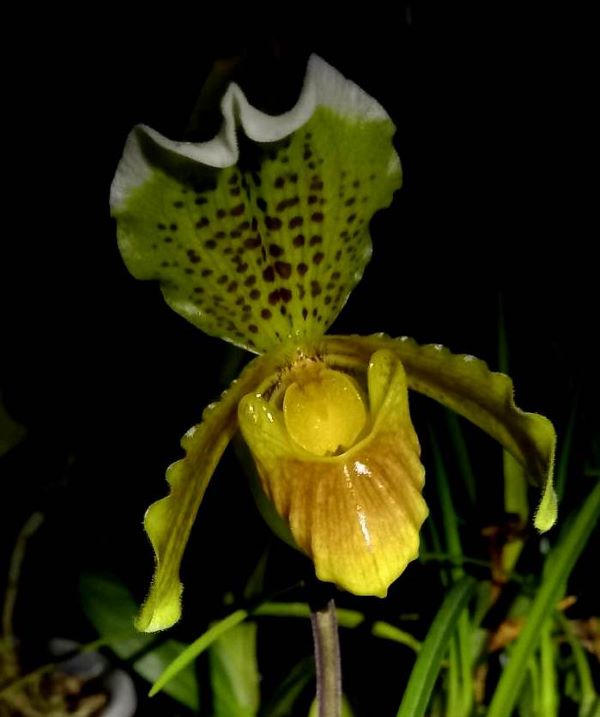
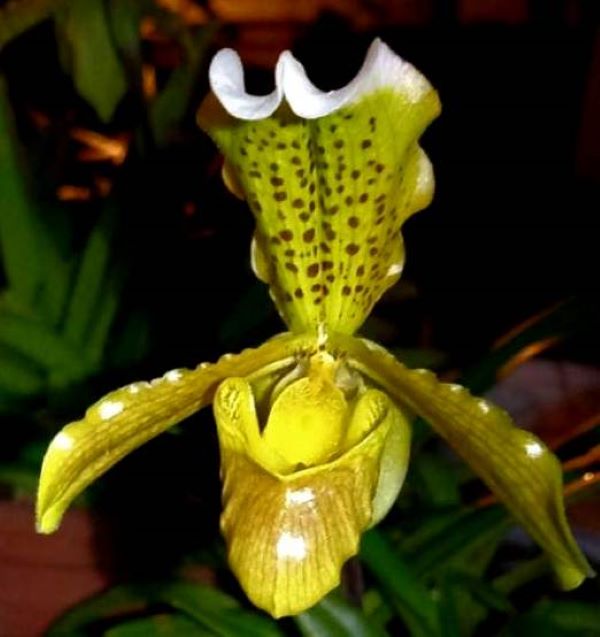
Traditionally, Paphiopedilum insigne has been cultivated on the Portuguese island of Madeira since the 19th century. Initially, these plants were cultivated in greenhouses, in gardens or in pots. When the orchid blooms at Christmas, hundreds of flowers are used in churches to decorate the altars.
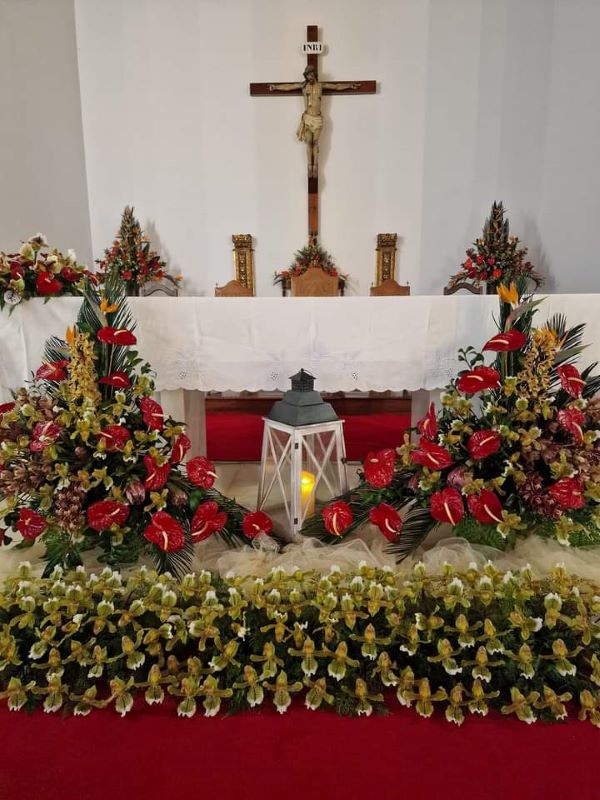
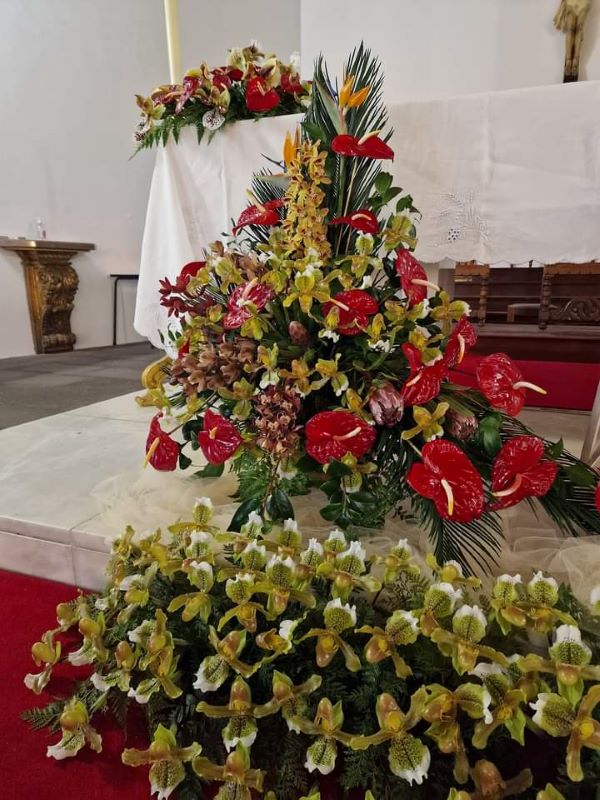
When cultivating these plants, Nelio Freitas CALDEIRA noticed a plant with a different shoe. What initially looked like a deformation developed exactly the same way with the next year's flowering.
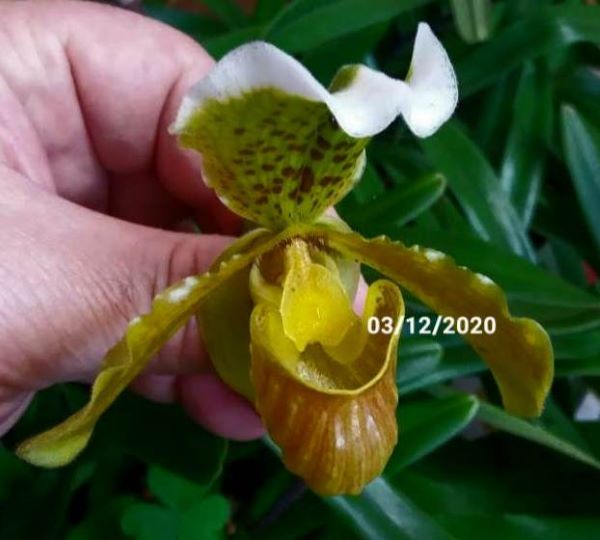
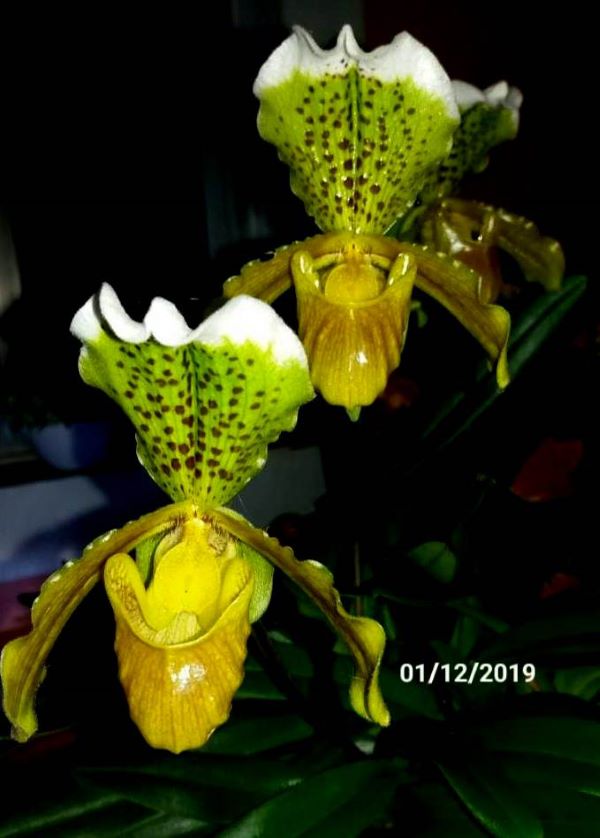
The plant was selected and propagated again and again in the following years by division. All sections have retained this eye-catching shoe during flowering.
Olaf GRUSS therefore recommended the cultivator to distinguish this plant from the other plants with a clone name. The owner chose the name:
Paph. insigne "Mantas"
During our holiday trip in April 2023 I had the opportunity to meet Mr. CALDEIRA in person. I was also able to gain insights into the culture of lady's slippers and other orchids on Madeira. The mild Mediterranean climate on this island allows most orchids to be cultivated outdoors all year round.
Of course, I was particularly interested in the fertilization of orchids on Madeira. I was surprised that salt fertilizers are not used in most crops there.
It's impressive that Paph. insigne are cultivated over several generations in good cultural condition and passed on to the following generations.
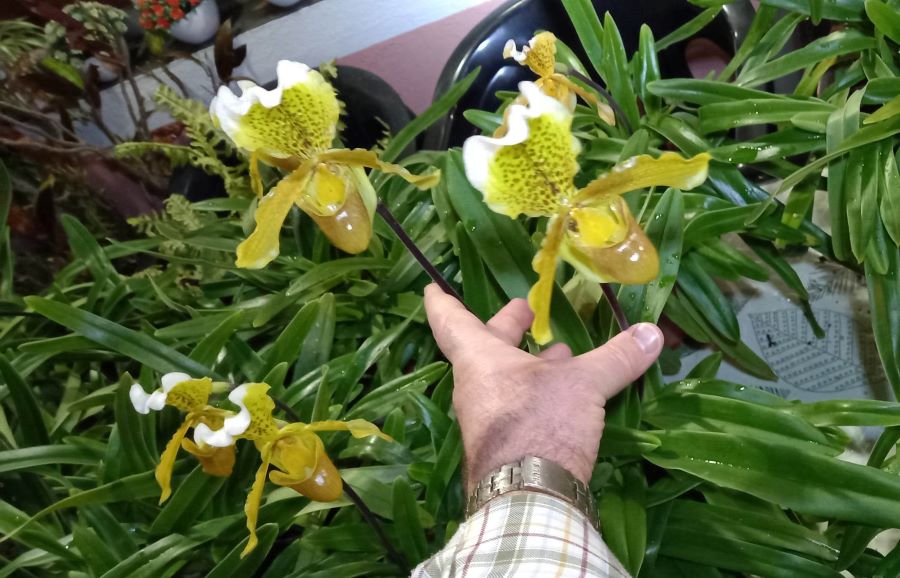
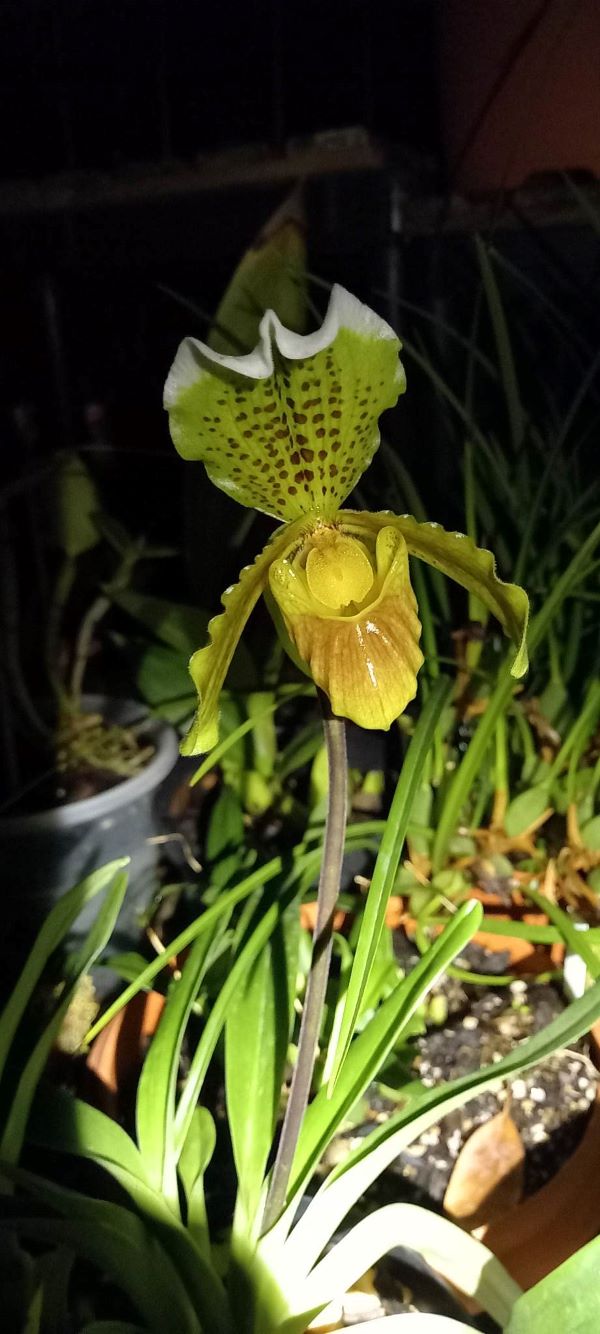
When cultivating the orchids on site, the focus is more on bacteria or other microorganisms, which obviously provide the orchids with nutrients. Occasionally, a kind of "Bokashi" with effective microorganisms is also produced, with which the plants are then watered and which nourishes the orchids.
Experiments are also being carried out with turmeric in order to minimize harmful organisms on the plants.
For me, this holiday was an interesting insight into a different culture of orchids.


